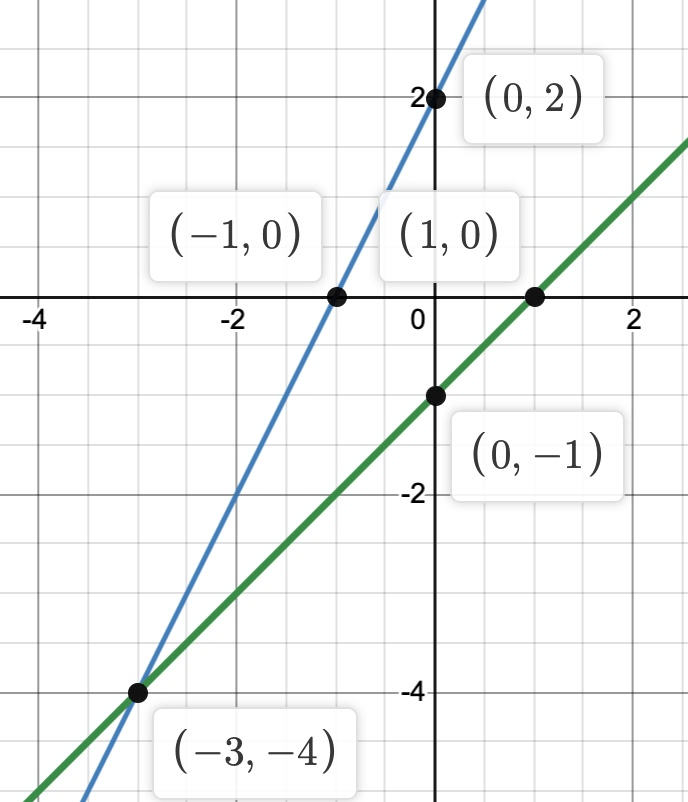x + 3 y = 5
2x - 3y = -8
(-1,2)
y = 2
3x + 2y = 10
(2,2)
y = 2x + 2
y = x - 1
(3,-4)

what are the 3 methods of solving systems of equations
elimination
graphing
substitution
What is the square root of 80 to the nearest tenth?
8.9
4x - 3y = 16
5x + 3y = 20
(4,0)
y = x + 1
2x + y =10
(3,4)
y = 2x + 5
y = x + 3
(-2,1)
Where is the solution when you graph a system of equations?
The point of intersection
Solve for d:
12
-2x - 9y = -25
-4x - 9y= 23
(-1,3)
y = 5x - 1
2y = 3x + 12
(2,9)
3x - 2y = 8
x + y = 6
(4,2)
How can you tell if a linear system has infinitely many solutions?
the equations are the same and the lines lie on top of each other
Is this equation proportional or nonproportional?
y = 6x
proportional
4x - 9y = 2
12x - 5y = -38
(-4,-2)
2x - 3y = -2
y= -4x + 24
(5,4)
y = 1/2x + 2
y = 1/4x + 4
(8,6)
What does it mean when the lines are parallel or they have the same slope and different y-intercepts or when you solve the equations and get a false statement with no variables remaining.
no solution
Find the slope:
$10 per hour
The equations 5x + 2y = 48 and 3x + 2y = 32 represent the money collected from school concert tickets sales during two class periods. If x represents the cost for each adult ticket and y represents the cost for each student ticket, what is the cost for each adult ticket?
x=8
x + y = 10
-y = 5 + x
no solution
4x - 5y = 15
8x + 5y = 45
(5,1)
The method of solving equations where you add or subtract equations to end up with one variable.
elimination
What is the volume of a sphere with a radius of 5?
523.6